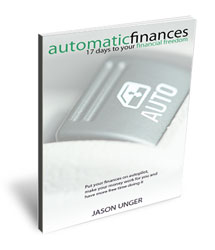
Dollar cost averaging describes a way of investing in which a person buys a stock or other asset in a series of small purchases over time rather than in one large purchase. By doing this, investors can protect themselves from the dangers of falling prices by lowering the effective costs of owning a stock or mutual fund.
Dollar Cost Averaging: An Example
Consider investor A who has $1,000 with which to buy a stock. This investor is interested in buying shares in a company that is currently trading at $10 a share. Now, one way an investor can purchase this stock is to just simply buy $1,000 worth of shares in this company. Investing in this manner, the investor would own 100 shares of stock at $10 per share.
Now, consider another investor, named investor B, who wants to take advantage of dollar cost averaging in order to protect himself from potential losses. This investor decides to break up his investment into two $500 blocks. Unlike the first investor, this person will only buy $500 worth of stock immediately.
As such, he will only own 50 shares of stock at $10 a share. He will save the other $500 to buy more shares in the company one month from now.
Fast forward one month and now our hypothetical company is only trading at $5 a share. At this point, investor B buys another $500 worth of stock. Since the stock is only trading at $5 a share now, the investor is able to buy 100 shares of stock at this price. In short, he has bought additional shares of company stock at a reduced price.
At this point, we can look at the portfolio of both investors. Investor A owns 100 shares of stock at $5 a share. But since he bought all of those shares at $10, he has lost $500 of his initial investment. It has not been a good month for investor A.
On the other hand, investor B has bought 50 shares at $10 a share and 100 shares at $5 a share. In total, this investor has bought 150 shares of stock for $1,000. By dividing, we find that investor B has only paid a total of $6.67 per share, less than the $10 per share paid by investor A.
Thus, investor B has only lost $250 of his investment, not $500. It’s still not a great day, but it’s certainly better than investor A.
This, in a nutshell, is the benefit of dollar cost averaging: it lowers your cost basis as a stock falls in price. Of course, dollar cost averaging works in reverse, too. As a stock increases, an investor who is dollar cost averaging is buying into a rising market, increasing his cost basis and limiting his gains.
In a sense, dollar cost averaging can be looked at as a sort of insurance policy, sacrificing some larger gains in order to protect yourself from larger losses.
Automatic Investing
Many investors, and financial advisors with finance degrees, who utilize dollar cost averaging use an automatic investing strategy in order to implement it. These investors put aside a set amount of money every month to invest in a stock or mutual fund. After the initial setup, investors no longer have to manage their investments every month; the investments are taken care of by the brokerage firm or mutual fund company.
This is an advantage for many investors who many not have the discipline to invest money themselves in a consistent manner. By having the money taken out automatically, the decision is now out of their hands. For many people, this may be the only way to impose a retirement plan on themselves.
Another benefit of automatic investing is that it imposes dollar cost averaging by its very nature. This is a great benefit for those who have a steady income in which to invest.
By combining dollar cost averaging with automatic investing, an investor can save consistently and safely for their retirement or other savings goals.
David Spader is a freelance writer and blogger who usually looks at savings account deals over at SavingsAccount.Org. His most recent review looked at the best CD rates.



